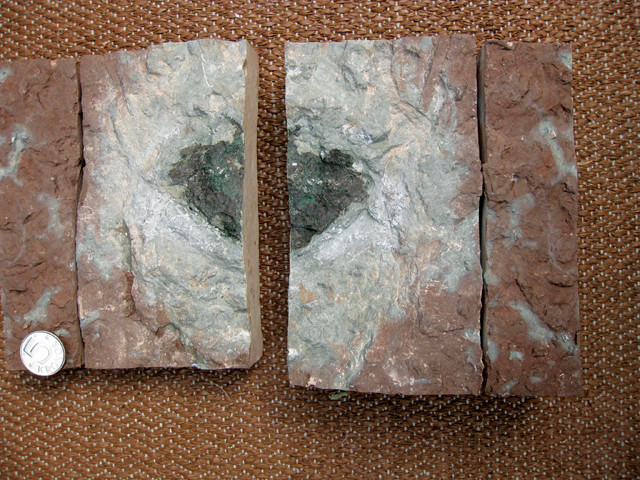
by Mary Caperton Morton Monday, October 17, 2016

An 8-centimeter-wide meteorite, recently found embedded in pink limestone in a quarry in Sweden, is chemically distinct from all other known types of meteorites. Credit: Qing-zhu Yin, University of California, Davis.
Meteorites offer a glimpse into the workings and origins of our solar system. Now, a meteorite found in a Swedish quarry, reported in a new study in Nature Communications, is opening a whole new window: The find has been classified as a new type of meteorite, never before seen on Earth.
“In our entire civilization, we have collected over 50,000 meteorites, and no one has seen anything like this one before,” said co-author Qing-zhu Yin of the University of California, Davis, in a statement.
The new meteorite, nicknamed Ost 65 and found in limestone from a quarry in southern Sweden, is actually considered a fossil meteorite because the original rock has been significantly altered over time. Enough resistant minerals were still present, however, for Yin’s team to conclude that the specimen is chemically distinct from all other known types of meteorites. They were also able to date the meteorite and estimate that it traveled through space for about 1 million years before crashing to Earth about 470 million years ago, during a time of heavy bombardment by objects from the asteroid belt.
The timing matches that of the more common L-chondrite meteorites found in the same quarry, indicating the mysterious parent of the new meteorite may have collided with the original source of the L-chondrites in space, with a shower of debris reaching Earth and adding to the unusual density of meteorites that date to the Ordovician Period. Scientists have long suspected that this rain of meteorites may have influenced the evolution of life on Earth, which was diversifying rapidly during this time.
© 2008-2021. All rights reserved. Any copying, redistribution or retransmission of any of the contents of this service without the expressed written permission of the American Geosciences Institute is expressly prohibited. Click here for all copyright requests.